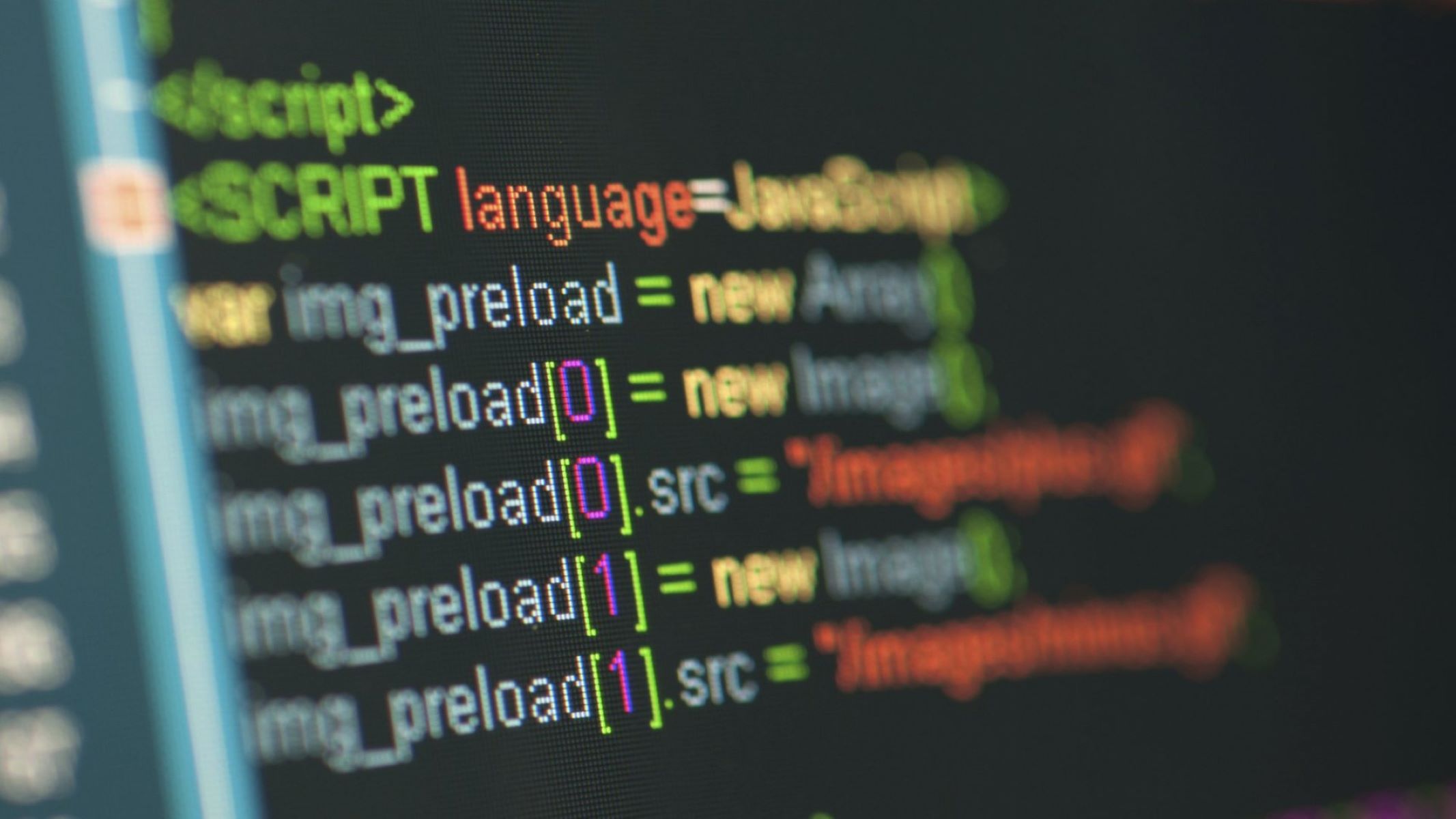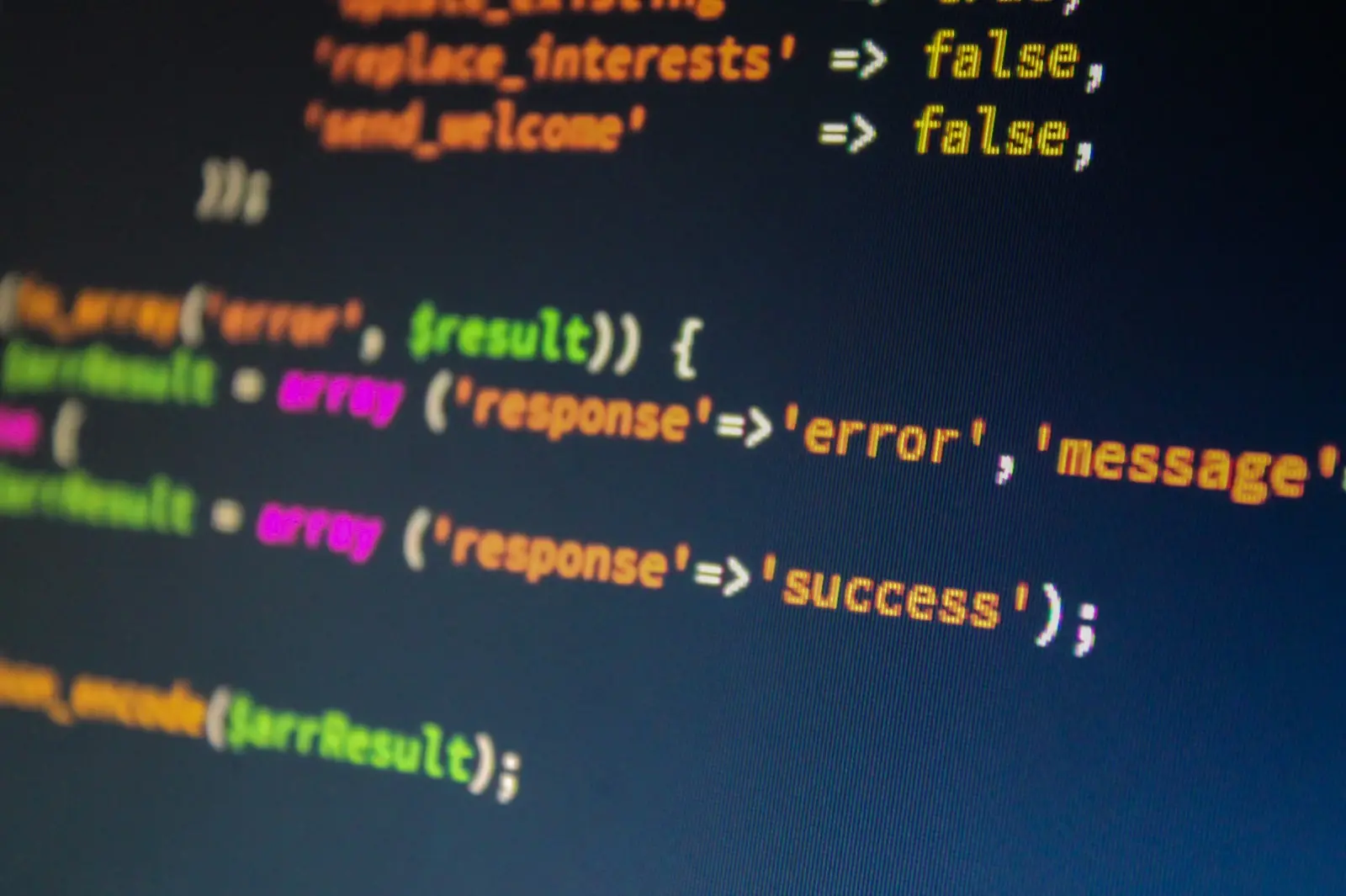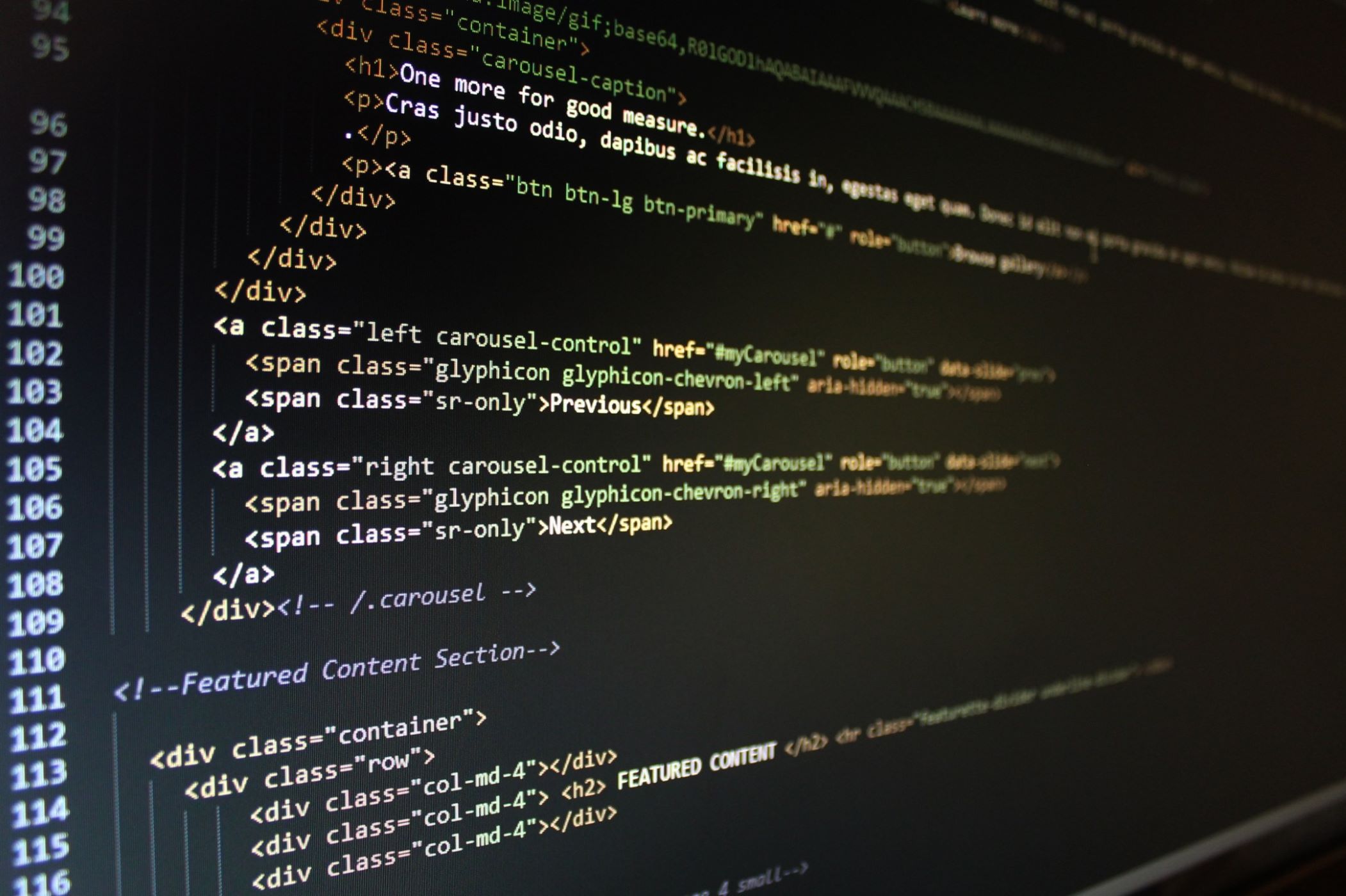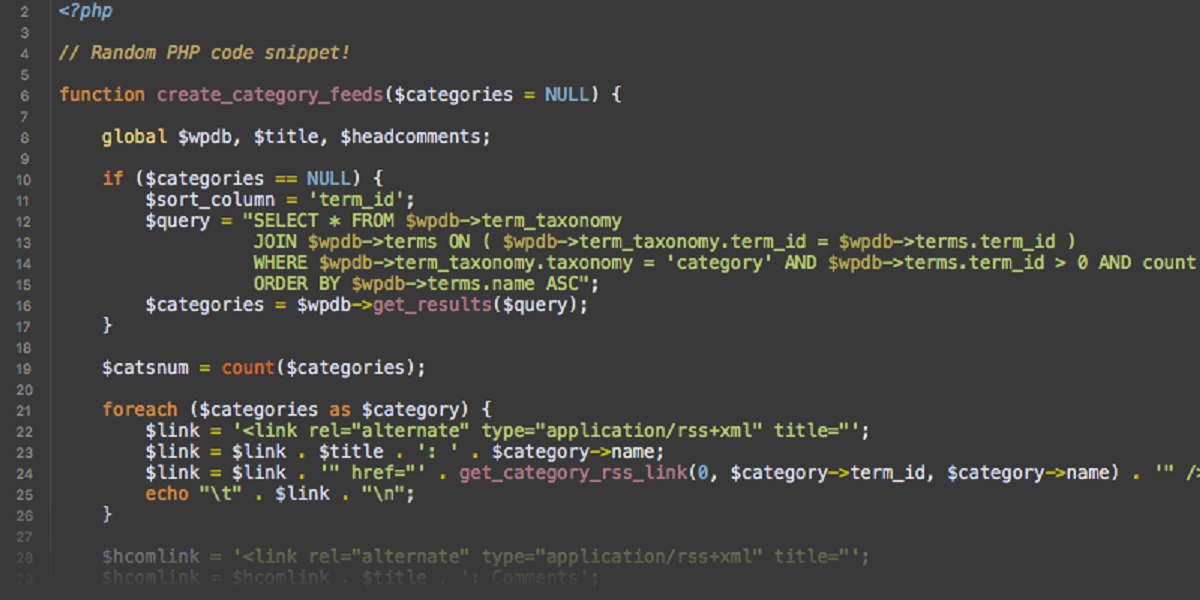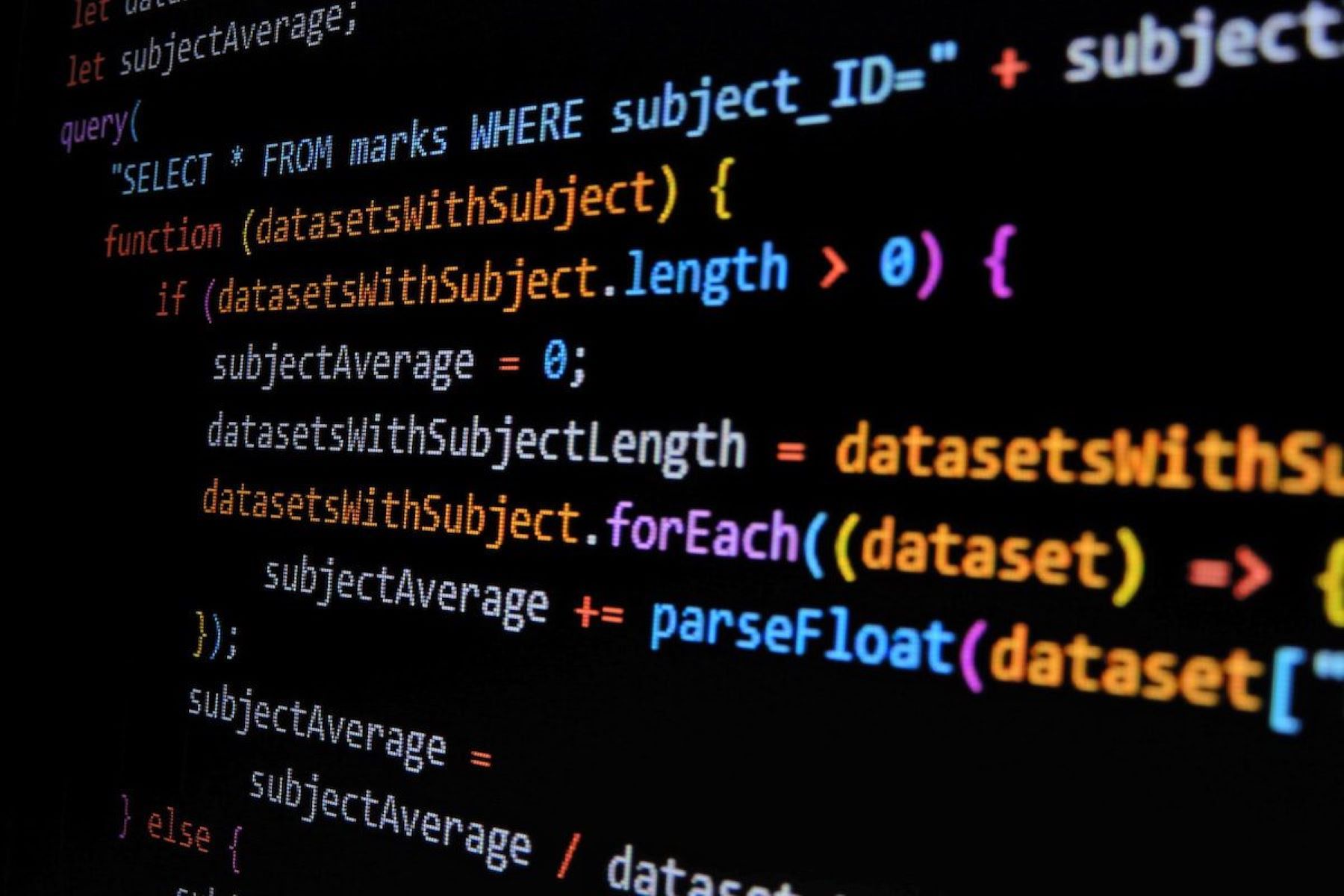Introduction
Coding languages are the backbone of the digital world we live in today. They provide the instructions necessary for computers and software applications to function and interact with users. Understanding coding languages is essential for developers, programmers, and even individuals who want to have a basic understanding of how technology works.
Coding languages, also known as programming languages, are systems of rules and syntax used to write computer programs. They allow humans to communicate with machines by providing a set of instructions that tell the computer what actions to perform. These instructions can range from simple tasks such as displaying a message on the screen to complex functions like manipulating and analyzing large sets of data.
Learning a coding language is like learning any other language. It involves understanding the vocabulary, grammar, and syntax specific to that language. Just as spoken languages like English, French, and Spanish have their own unique characteristics, coding languages also have their distinct features and purposes.
In this article, we will explore the different types of coding languages and their functions. We will delve into procedural languages, functional languages, object-oriented languages, scripting languages, and markup languages. Each category has its own strengths and benefits, catering to different programming needs and objectives.
Whether you are interested in becoming a professional programmer or simply curious about how coding works, gaining knowledge about coding languages will open up a whole new realm of possibilities. Let’s dive into the world of coding and uncover the various types of programming languages and their significance in today’s digital landscape.
What are coding languages?
Coding languages, also known as programming languages, are sets of rules and instructions that allow programmers to write computer programs. These languages provide a standardized way for humans to communicate with machines and tell them what tasks to perform. Coding languages are the backbone of software development and are used to create various applications, websites, and software systems.
At their core, coding languages consist of a combination of syntax, keywords, symbols, and rules that dictate how instructions should be written and interpreted by the computer. They enable programmers to write code that is readable and understandable, both by humans and computers.
Coding languages are designed to cater to different types of programming needs and objectives. There are various categories of coding languages, each serving a specific purpose and offering specific features and functionalities.
Whether you’re building a simple website, developing a complex software system, or working on data analysis, there is a coding language suited for your specific needs. Understanding the different types of coding languages and their uses can help you choose the right language for your project and enhance your programming skills.
In the following sections, we will explore the main categories of coding languages: procedural languages, functional languages, object-oriented languages, scripting languages, and markup languages. Each category has its own unique characteristics and advantages, allowing programmers to tackle different programming challenges in efficient and effective ways.
By delving into the world of coding languages, you will gain a deeper understanding of how programming works and unlock the potential to create innovative solutions that can impact the digital landscape. Let’s now explore each category in more detail and discover the languages within them.
Types of coding languages
Coding languages can be classified into different categories based on their programming paradigm and purpose. Each category represents a different approach to solving programming problems and offers unique features and capabilities. Understanding the various types of coding languages can help programmers choose the most suitable language for their specific project requirements. In this section, we will explore the main types of coding languages:
- Procedural languages: Procedural languages focus on sequences of instructions that execute one after another in a linear manner. They emphasize the step-by-step execution of a program, making them suitable for tasks with clear and defined procedures. Popular examples of procedural languages include C, Fortran, and Pascal.
- Functional languages: Functional languages approach programming by treating computation as the evaluation of mathematical functions. They emphasize immutability, recursion, and higher-order functions. Languages like Haskell, Lisp, and Erlang fall into this category.
- Object-oriented languages: Object-oriented languages revolve around the concept of objects, which encapsulate both data and behavior. They promote code reusability, modularity, and abstraction. Widely used object-oriented languages include Java, C++, and Python.
- Scripting languages: Scripting languages are designed for automating specific tasks. They are often lightweight and interpreted, allowing developers to write code that can be executed on-the-fly. Examples of scripting languages include JavaScript, PHP, and Ruby.
- Markup languages: Markup languages are not traditional programming languages, but they are instrumental in structuring and presenting content on the web. They are used to create the structure and style of web pages. HTML and XML are examples of markup languages.
Each type of coding language has its own advantages and disadvantages, making them suitable for different types of programming tasks. By understanding the characteristics and strengths of each type, programmers can make informed decisions when selecting a coding language for their projects.
Now that we have explored the types of coding languages, let’s delve deeper into each category and examine some popular coding languages within them.
Procedural languages
Procedural languages are a category of coding languages that emphasize a sequential, step-by-step approach to programming. In procedural languages, programs are divided into smaller procedures or functions that perform specific tasks. These procedures are executed in a linear manner, one after another, to achieve a desired outcome.
One of the key features of procedural languages is the ability to break down complex problems into smaller, more manageable parts. This modular approach offers several benefits, including code reusability, easier debugging, and improved maintainability.
Common examples of procedural languages include C, Fortran, and Pascal. These languages have been used for decades and have a rich history in software development. C, in particular, is widely regarded as one of the most influential programming languages, with its low-level capabilities and efficiency making it a popular choice for system-level programming and embedded systems development.
The procedural paradigm is well-suited for tasks that require clear step-by-step instructions. It excels in situations where the focus is on managing and manipulating data rather than on modeling complex relationships between objects.
Procedural languages provide a solid foundation for beginners to learn programming concepts and enhance their problem-solving skills. They offer a straightforward syntax and a clear flow of control, making it easier to grasp the fundamentals of programming logic and algorithms.
However, procedural languages do have some limitations. As programs grow in size and complexity, maintaining and modifying them can become challenging. Additionally, procedural languages may not be the best choice for certain types of applications, such as those with a heavy emphasis on user interfaces or complex data structures.
In summary, procedural languages are a fundamental category of coding languages that emphasize step-by-step execution of instructions. They excel at managing and manipulating data and provide a solid foundation for learning programming concepts. While they have limitations in certain areas, procedural languages continue to play a significant role in software development and serve as a stepping stone for programmers to explore more advanced paradigms and languages.
Functional languages
Functional languages are a category of coding languages that focus on treating computation as the evaluation of mathematical functions. In functional languages, programs are built by defining and composing functions, which take inputs and produce outputs without any side effects or mutable state.
One of the key principles of functional programming is immutability, which means that data values once assigned cannot be modified. Instead, new values are created through function composition and transformation. This approach reduces the potential for bugs caused by unintended side effects and makes it easier to reason about the behavior of programs.
Functional languages also heavily rely on recursion, allowing functions to call themselves and solve problems in a self-referential manner. Recursion allows for concise and elegant solutions to complex problems and enables programmers to express concepts in a more mathematical and concise way.
Popular examples of functional languages include Haskell, Lisp, and Erlang. Haskell is a purely functional language known for its strong static typing and powerful type inference capabilities, making it a popular choice for academic research and writing highly robust and reliable software. Lisp, on the other hand, is a family of languages known for their flexibility and expressive power, making them suitable for applications such as artificial intelligence and symbolic processing. Erlang is designed for concurrent and distributed systems, emphasizing fault-tolerance and scalability.
Functional languages are well-suited for tasks that involve complex mathematical computations, data processing, and algorithmic problem-solving. Their emphasis on immutability and pure functions makes it easier to reason about program behavior and enables better parallelization and optimization in some cases.
However, functional languages may have a steeper learning curve for programmers who are accustomed to imperative or object-oriented programming paradigms. The emphasis on recursion and immutability can require a shift in thinking and a different approach to problem-solving.
In summary, functional languages provide a unique approach to programming by treating computation as the evaluation of mathematical functions. They promote immutability, recursion, and the absence of side effects. While they have a steeper learning curve, functional languages excel in tasks that involve complex mathematical computations and data transformation.
Object-oriented languages
Object-oriented languages are a category of coding languages that revolve around the concept of objects. Objects are instances of classes, which are the building blocks of object-oriented programming. In object-oriented languages, programs are designed by creating classes, defining their attributes (data) and behaviors (methods), and then creating objects that interact with each other.
One of the key principles of object-oriented programming is encapsulation, which involves bundling data and related behaviors into classes. This allows for the creation of modular code, where each class is responsible for its own data and methods. Encapsulation promotes code reusability, modularity, and abstraction by hiding the internal implementation details of a class and providing a defined interface for interacting with it.
Another important concept in object-oriented languages is inheritance, which allows classes to inherit properties and behaviors from other classes. This enables code reuse and promotes the creation of hierarchies and relationships between classes.
Widely used object-oriented languages include Java, C++, and Python. Java, with its versatility and platform independence, is commonly used for building applications ranging from desktop to enterprise-level systems. C++ provides a balance between high-level and low-level programming, making it suitable for performance-critical applications. Python, known for its simplicity and readability, is widely used in various domains, including web development, data analysis, and artificial intelligence.
Object-oriented languages are well-suited for projects that involve complex systems with multiple interacting entities. They promote code reuse, modularity, and scalability, and allow for the modeling of real-world concepts and relationships. A key advantage of object-oriented languages is their ability to manage complexity by breaking down a problem into smaller, manageable objects.
Despite their advantages, object-oriented languages may introduce additional complexity and overhead for simpler projects or performance-critical applications. Additionally, the object-oriented paradigm requires programmers to think in terms of objects and relationships, which can be a shift in mindset for those coming from procedural or functional programming backgrounds.
In summary, object-oriented languages are a category of coding languages that revolve around the concept of objects and classes. They promote code reusability, modularity, and the modeling of real-world concepts. While they may introduce additional complexity, object-oriented languages provide powerful tools for managing complexity and creating scalable and maintainable software systems.
Scripting languages
Scripting languages are a category of coding languages that are designed for automating specific tasks. They are often lightweight and interpreted, meaning that code can be written and executed on-the-fly without the need for compilation. Scripting languages focus on simplifying and accelerating the development process by providing easy-to-use syntax and built-in functionality for common tasks.
One of the key advantages of scripting languages is their flexibility and ease of use. They typically offer a higher level of abstraction, allowing programmers to accomplish complex tasks with fewer lines of code compared to more low-level languages. Scripting languages are often used for tasks such as web development, system administration, and automation.
Popular examples of scripting languages include JavaScript, PHP, and Ruby. JavaScript is widely used for client-side and server-side web development, providing interactivity and dynamic behavior to websites. PHP is a server-side scripting language specifically designed for web development, enabling the creation of dynamic and database-driven websites. Ruby is known for its simplicity and readability, making it a popular choice for web development and scripting tasks.
Scripting languages are well-suited for rapid prototyping, quick development cycles, and tasks that require a high level of flexibility and agility. They often come with extensive libraries and frameworks that enable developers to leverage pre-built functionality and solve common problems more easily.
However, scripting languages may not be ideal for performance-critical applications or tasks that require low-level control over system resources. Their interpreted nature can introduce overhead, and they may not have the same level of optimization as compiled languages. Additionally, the flexibility and ease of use of scripting languages can sometimes result in less robust and secure code if proper care is not taken.
In summary, scripting languages provide a convenient and flexible way to automate tasks and simplify development. They are often used for web development, system administration, and automation. While they may not be suitable for performance-critical applications, scripting languages excel in rapid development cycles and tasks that require high flexibility and ease of use.
Markup languages
Markup languages, although not traditional coding languages, play a crucial role in structuring and presenting content on the web. Markup languages use tags to define the structure and formatting of documents, allowing browsers and other software to interpret and display the content correctly.
One of the most widely used markup languages is HTML (Hypertext Markup Language). HTML is the foundation of web development, providing a standardized way to structure and present content on the internet. HTML tags define elements such as headings, paragraphs, images, links, and more, allowing developers to create a cohesive and organized web page.
Another markup language is XML (Extensible Markup Language), which focuses on describing data rather than presentation. XML is used for storing and exchanging structured data, and it provides a flexible and self-describing format for data representation.
Markup languages, including HTML and XML, are not programming languages in the traditional sense since they lack the ability to perform computations or control program flow. However, they are vital for creating and presenting content in a structured manner, enabling communication between humans and software systems.
HTML and XML are supported by various programming languages and frameworks, allowing developers to dynamically generate and manipulate markup-based content. For example, JavaScript can be used to manipulate and update the HTML structure of a web page, providing interactivity and dynamic behavior.
Markup languages are well-suited for tasks that involve content presentation and document structure. They allow developers to create visually appealing and well-organized web pages, ensuring a consistent and user-friendly experience across different devices and platforms.
However, the use of markup languages is not limited to web development. XML, in particular, is widely used in areas such as data storage, data representation, and system interoperability. Its flexibility and self-descriptive nature make it a versatile tool for various applications.
In summary, markup languages such as HTML and XML are essential for structuring and presenting content on the web. While not programming languages in the traditional sense, they provide the foundation for web development and data representation. Markup languages excel at content presentation and document structure, ensuring a consistent and user-friendly experience for various applications.
Common coding languages in each category
Within each category of coding languages, there are several popular and widely used languages that developers rely on to build a wide range of applications and systems. Let’s explore some common coding languages in each category:
- Procedural languages: In the procedural languages category, some commonly used languages include:
- C: Known for its efficiency and low-level programming capabilities, C is widely used for system-level programming and embedded systems development.
- Fortran: Originally developed for scientific and engineering applications, Fortran is still widely used in computational mathematics and scientific research.
- Pascal: Pascal is a language known for its readability and maintainability, making it a popular choice for teaching programming concepts and building educational software.
- Functional languages: Common functional languages include:
- Haskell: Haskell is a purely functional language that emphasizes strong static typing and advanced type inference. It is popular for its robustness and conciseness when it comes to writing highly reliable software.
- Lisp: Lisp is a family of languages known for their flexibility and expressive power. It is often used in the field of artificial intelligence and symbolic processing, with Common Lisp being a widely adopted variant.
- Erlang: Erlang is designed for developing concurrent and distributed systems with a focus on fault-tolerance and scalability. It is known for its ability to handle a large number of concurrent processes.
- Object-oriented languages: Some commonly used object-oriented languages are:
- Java: Java is a versatile and platform-independent language commonly used for developing a wide range of applications, from desktop software to enterprise-level systems.
- C++: C++ is a language that offers a balance between high-level and low-level programming. It is often used for performance-critical applications and systems programming.
- Python: Python is known for its simplicity, readability, and versatility. It is widely adopted for web development, data analysis, scripting, and artificial intelligence tasks.
- Scripting languages: Some popular scripting languages include:
- JavaScript: JavaScript is a versatile scripting language primarily used to add interactivity and dynamic behavior to web pages. It is supported by all modern web browsers.
- PHP: PHP is a server-side scripting language specifically designed for web development. It enables the creation of dynamic and database-driven websites.
- Ruby: Ruby is praised for its simplicity and readability, making it a popular choice for web development and scripting tasks. It embraces a philosophy of “convention over configuration.”
- Markup languages: The most common markup language is:
- HTML: Hypertext Markup Language is the core language for creating web pages and structuring content. It defines the structure of web pages, including elements such as headings, paragraphs, images, and links.
- XML: Extensible Markup Language is used for representing and exchanging structured data. It provides a flexible and self-descriptive format for data representation.
These languages are just a few examples of the wide variety of coding languages available in each category. Each language has its own strengths, specialties, and communities of developers, proving that there is a coding language for every need and purpose.
Conclusion
Coding languages are the foundation of the digital world, enabling developers to build applications, websites, and software systems that power our daily lives. In this article, we have explored the different types of coding languages and their significance in the programming landscape.
We began by understanding what coding languages are and how they facilitate communication between humans and machines. Coding languages provide a standardized way for programmers to write instructions and define the behavior of software applications.
We then delved into the various types of coding languages. Procedural languages emphasize a linear, step-by-step approach to programming, making them suitable for tasks that require clear procedures and data manipulation. Functional languages focus on treating computation as the evaluation of mathematical functions, promoting immutability and recursion. Object-oriented languages revolve around objects and classes, promoting code reusability, modularity, and abstraction. Scripting languages are designed for automation and quick development cycles, while markup languages are essential for structuring and presenting content on the web.
Within each category, we explored some common coding languages. From C and Fortran in the procedural category to Haskell and Lisp in the functional category, from Java and C++ in the object-oriented category to JavaScript and PHP in the scripting category, and from HTML to XML in the markup category, these languages showcase the diversity and versatility of coding languages available to programmers.
It is important to note that this article only scratches the surface of the vast programming landscape. There are numerous other coding languages, each with its own unique features, strengths, and communities. As a programmer, expanding your knowledge and exploring different languages can enhance your versatility and problem-solving abilities.
Whether you are a beginner just starting your coding journey or an experienced developer honing your skills, understanding coding languages is essential. By choosing the right language for your projects and gaining expertise in different programming paradigms, you can become a more effective and well-rounded programmer.
So, dive into the world of coding languages, explore their features, and embark on a journey of continuous learning and growth in the exciting field of programming.







